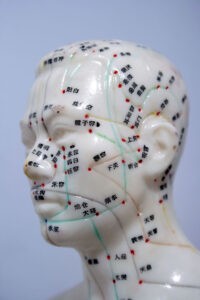What is EFT Tapping and Why You Should Try It Now?
What is EFT Tapping?
You may have heard people talking about EFT Tapping and wondered what it is, and if it actually works? EFT, which stands for Emotional Freedom Technique, is sometimes simply called tapping, because that is exactly what you do. You tap on different pressure points on the body, while reciting a tapping script related to the outcome you are looking to accomplish. Although it has been gaining a lot of popularity recently, it is not a new technique.
This post may contain affiliate links. That means I may receive a small commission, at no extra cost to you, if you purchase through my link.
EFT was first developed in 1990’s by Gary Craig, who was expanding on Roger Callahan’s work with Thought Field Therapy, or TFT. Roger Callahan was fascinated with the use of meridians in Chinese medicine. He believed that the meridians could not only be used for physical healing, but also for mental and emotional health. Thus TFT was born. Gary Craig took Callahan’s work and refined it to become Emotional Freedom Technique.
How Do the Meridians Work?
Meridians are essentially pathways that our energy, (or chi, as it is referred to in Chinese medicine), flows through.

Negative thoughts and emotions can create imbalances and blocks in the flow of our energy, causing health problems. These blocks can cause anything from anxiety and panic attacks, mild to severe depression, and even physical pain and illness. EFT looks to balance this energy and clear these blockages, paving the way to ideal health. It works on the same premise as acupuncture and acupressure therapies.
By tapping on the different meridian points and using a script to focus your intention, you transmit signals to your brain, enabling you to release the blocks and get your energy moving again. This eases negative emotions and relieves your pain.

The Mental Wealth Box – Mental Health, Self-Care Subscription Box
from: Cratejoy
A More Scientific Explanation Behind EFT Tapping
The limbic system is directly effected by tapping. It is where your emotions and long term memories are stored. More specifically, EFT impacts the amygdala. The amygdala is the brains fear centre. It is where the ‘fight or flight’ response is triggered, flooding the body with hormones as a warning that it is in immediate danger. This response is designed to save your life, if you are in actual danger. In todays society, however, the fight or flight response is usually activated in inappropriate situations.
Why is this a problem? Because when the ‘fight or flight’ response is triggered, our body is flooded with adrenaline and blood flow is concentrated to your extremities. All ‘nonessential’ functions stop running at full strength. Functions such as digestion, growth and reproductive hormone production and tissue repair. When these systems are not working properly for extended periods of time, major health issues often occur.

What does all of this have to do with tapping? Tapping literally shuts down the ‘fight or flight’ response. It ‘turns off’ the amygdala. It then sends signals to the body letting it know that it is safe. Your system returns to normal functioning and good health and wellbeing is, once again, maintained.
If you’d like to read more about anxiety, it’s effects on the body and how to overcome it, you can read my post on How to Cope With Anxiety here.
What Can You Use EFT For?
EFT Tapping has provided successful relief for:
- Stress and anxiety
- Depression
- Phobias
- Pain Relief
- PTSD
- Addiction
- Emotional Trauma
- Limiting beliefs
- Low self-esteem
Over the last few years there has been some studies on the effectiveness of EFT. In a study in 2013, 30 veterans suffering with PTSD showed significant improvement while using EFT along side their regular treatment. After just three sessions, 60% no longer met the PTSD criteria.
Students Suffering from moderate to severe depression were studied in 2012. The students that received EFT reported significant improvement in their depression, compared to the students that received no treatment.
What Does a Tapping Session Entail?
Starting a Session
Every practitioner has their own way to implement EFT. For most however, an EFT session will start with a discussion about what issue the client is having. How is it showing up in their lives? What have they tried in the past to alleviate the issue? The practitioner wants to get to know you a little better, so that they can figure out how best to help you.

Getting ‘in State’ and Rating the Issue
From there the practitioner will put you ‘in state’. This is just a fancy way of saying that they want you to experience the feelings that go along with the issue at hand. For example, if you are working on anxiety, the practitioner will ask you to allow yourself to feel some of that anxiety, so that they can work on eliminating it. Don’t worry, they are not going to put you so deep in ‘state’ that you have a panic attack, just enough to have something to work with.
The next step is to rate your issue. Again, using anxiety as an example, they will ask how bad your anxiety is on a scale from 1-10. This allows the practitioner to decide how many times the tapping sequence needs to be repeated. It also gives the client a way to measure the results after the session is complete.
You may also be interested in this post on working with a Life Coach or Counsellor
Start Tapping
During the tapping session, the practitioner will start by showing you where the pressure points are, but you will be the one doing the actual tapping. You will tap lightly with two or four fingers on each point, between 5-7 times while reciting a script. The script is often a statement or statements acknowledging the issue. Some practitioners will create two scripts. One that acknowledges the issue and another that focuses on the resolution of that issue. Still others create scripts based solely on positive affirmations.

Do you want to give EFT a try? Follow along with my EFT Tapping video below
Check out my EFT Page.
The Closing Routine
After each round of tapping, the practitioner will once again rate the intensity of your issue. When there is a significant drop in intensity, they will move on to a closing routine. The gamut procedure is frequently used.
The Gamut procedure is a routine that combines tapping on a pressure point while performing actions that trigger different parts of the brain, such as opening and closing your eyes or counting to five. By doing this, you can reprocess traumatic memories from your past, reducing the emotional charge attached to those memories. It is also useful in calming emotional distress, thus deepening the healing that happens within the session.
The Extras
Although some practitioners stop there, others will continue on by doing some focused breathing and perhaps even a short meditation. This not only helps the client to relax and feel more balanced and centred, but it helps to clear away any lingering negative emotions. Meditation is said to increase dopamine which is associated with motivation, reward, memory and focus. It is sometimes referred to as the “feel good neurotransmitter.” Adding meditation to the end of a EFT session gives the practitioner one more tool to ensure success. It also makes the client feel better, in a sense rewarding them for moving through their blocks.

Should You Try EFT?
Everyone should try EFT. Yes, I realize I am a little biased, but with such good results from such a simple technique, why wouldn’t you try it? It is a wonderful and simple way to break through your blocks. Regardless of how much resistance you may be feeling, EFT can move through that resistance and start the healing process. If you want to know more, book a free discovery call with me today so that I can answer all your questions.
Are you ready to try EFT Tapping? Book a session with me today.

Book a Session With Me









Very interesting! I have never heard of EFT before, but I’m very familiar with the limbic system and how it can become overactive in cases of chronic stress.
I’m so glad I could introduce you to something new!
I’ve never heard about EFT before but this was a great post, I learned a lot. It’s great to learn about new things.
I agree, I love learning about new things. I am so glad I was able to introduce you to EFT.
That sounds interesting!! I do a lot of research on mental health but strangely never came across this term, EFT. Looks like a wonderful technique, that is very similar to ‘ acupressure’ a technique, which is used to relieve physical pain by applying pressure on certain point on body. Thank you so much for sharing this amazing post. I would like to learn more about how ‘ fight or flight’ is addressed effectively by EFT.
Thanks for your comment!
You’re absolutely right. EFT was created based on the Chinese meridian system, like acupressure and acupuncture.
The stress response is triggered by the amygdala. During an EFT sessions the amygdala is directly effected, essentially shutting down the fight or flight response.
Feel free to contact me if you want to know more about EFT and how it works. I am happy to answer any questions.
This is really interesting to read about. I had never heard of EFT Tapping before but it makes sense now. Thank you for writing such an informative post.
Thanks for taking the time to read it!
Such an informative post! I’ve heard of EFT before but never really understood what it meant. It’s great to hear that it’s helped people who have PTSD! Thanks for sharing Tiffany 🙂
http://www.lynnmumbingmejia.com
Thanks for your comment Lynn! I’m glad you enjoyed the post. Let me know if you ever want to try an EFT session.